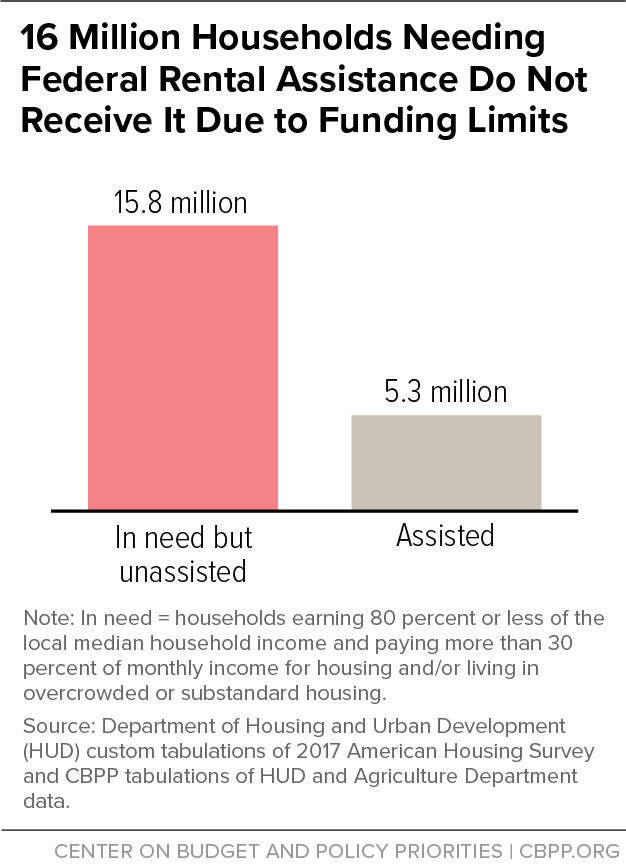BEYOND THE NUMBERS
Rental Assistance Cuts Homelessness and Poverty, But Doesn’t Reach Most Who Need It
Federal rental assistance programs such as Housing Choice Vouchers and public housing provide major benefits to low-income families, our new analysis explains, but more than 3 in 4 families that need rental assistance don’t get it due to funding limitations.
Among other benefits, rental assistance:
- Sharply reduces homelessness and other hardship. For example, it cuts the share of families with children living in shelters or on the street by three-fourths and lowers the share living in overcrowded conditions by more than half, according to one rigorous study.
- Lifts more than 3 million people above the poverty line. They include 665,000 elderly people — more than any other government program except Social Security — and 936,000 children. (These figures use the Supplemental Poverty Measure, which counts both cash assistance and non-cash benefits.)
- Can substantially improve adults’ health and well-being and children’s chances for long-term success. That’s particularly true when rental assistance enables families to move to lower-poverty neighborhoods with strong schools and less crime. For example, a groundbreaking 2015 study found that children whose families used vouchers to move to low-poverty neighborhoods had much higher adult earnings and rates of college attendance, and lower rates of single parenthood, than similar children whose families stayed in poor neighborhoods.
Nevertheless, roughly 16 million low-income households that need rental assistance (meaning they spend more than 30 percent of their income for housing or live in substandard or overcrowded homes) don’t get it due to funding limitations.
Policymakers should extend rental assistance to many more households by expanding the voucher program or through other approaches, such as establishing a federal renters’ tax credit to make housing affordable to some extremely low-income households. Policymakers also should do more to help families that have rental assistance to live in higher-opportunity neighborhoods if they want to. In particular, they could provide housing agencies and their partners with funding for “mobility assistance” services such as recruiting landlords in high-opportunity neighborhoods to rent to rental assistance recipients, counseling families on how to find housing, and providing financial assistance for costs such as security deposits.
Expanding rental assistance and enabling more assisted households to live in higher-opportunity areas would help people struggling with poverty, unaffordable housing, and the effects of racial and economic segregation, the research that we cite in our new report indicates. Fewer people would live in shelters, motels, on the street, or doubled up in unstable arrangements; fewer families, seniors, and people with disabilities would have to choose each month between paying the rent and buying needed medicine or food; and more children would have access to stable housing and opportunity-rich neighborhoods. Taken together, these benefits could substantially reduce low-income peoples’ exposure to hardship and improve their children’s chances of long-term success.

